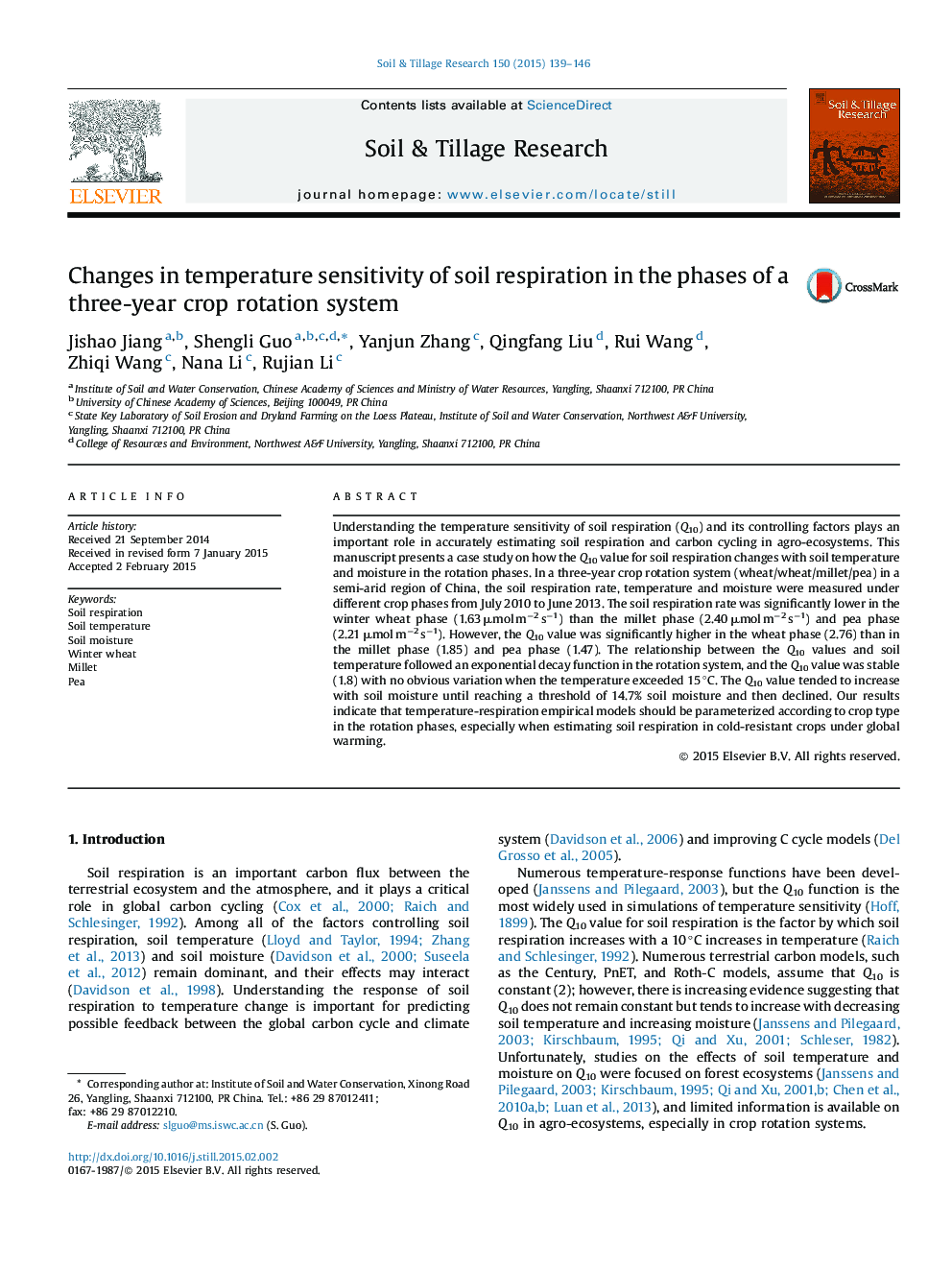| Article ID | Journal | Published Year | Pages | File Type |
|---|---|---|---|---|
| 305575 | Soil and Tillage Research | 2015 | 8 Pages |
•Soil respiration rate varied significantly with crop phases.•The Q10 varied significantly with the crop phases.•The Q10 were significantly and negatively associated with soil mean temperature.•The Q10 were correlated with mean soil moisture based on a quadratic relationship.•Temperature-respiration empirical models should be parameterized with crop types.
Understanding the temperature sensitivity of soil respiration (Q10) and its controlling factors plays an important role in accurately estimating soil respiration and carbon cycling in agro-ecosystems. This manuscript presents a case study on how the Q10 value for soil respiration changes with soil temperature and moisture in the rotation phases. In a three-year crop rotation system (wheat/wheat/millet/pea) in a semi-arid region of China, the soil respiration rate, temperature and moisture were measured under different crop phases from July 2010 to June 2013. The soil respiration rate was significantly lower in the winter wheat phase (1.63 μmol m−2 s−1) than the millet phase (2.40 μmol m−2 s−1) and pea phase (2.21 μmol m−2 s−1). However, the Q10 value was significantly higher in the wheat phase (2.76) than in the millet phase (1.85) and pea phase (1.47). The relationship between the Q10 values and soil temperature followed an exponential decay function in the rotation system, and the Q10 value was stable (1.8) with no obvious variation when the temperature exceeded 15 °C. The Q10 value tended to increase with soil moisture until reaching a threshold of 14.7% soil moisture and then declined. Our results indicate that temperature-respiration empirical models should be parameterized according to crop type in the rotation phases, especially when estimating soil respiration in cold-resistant crops under global warming.
